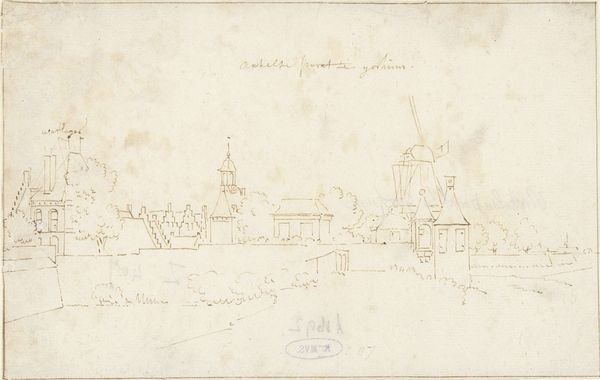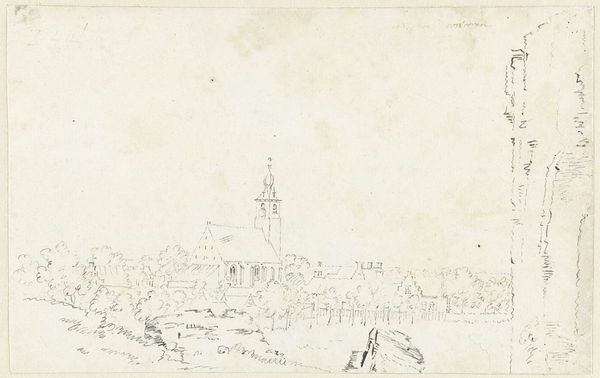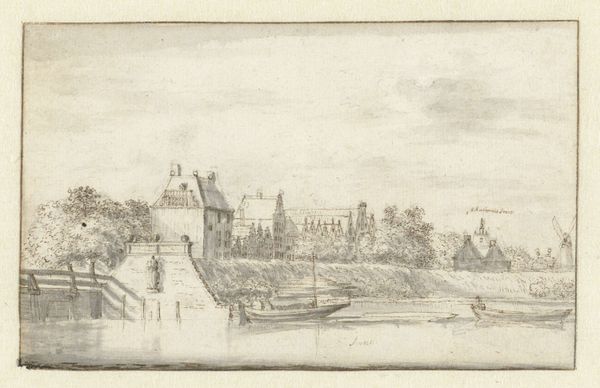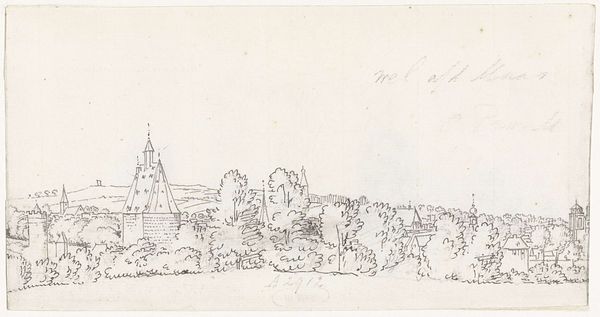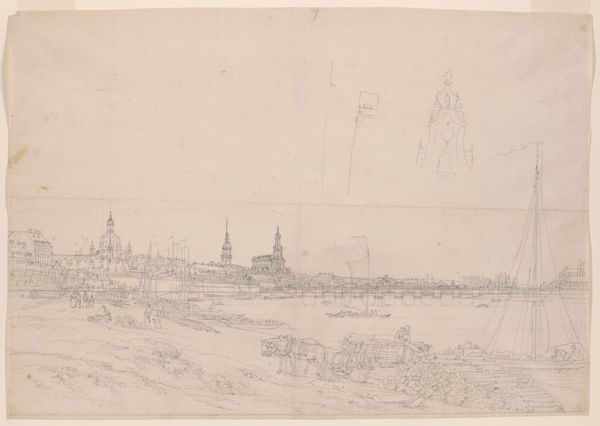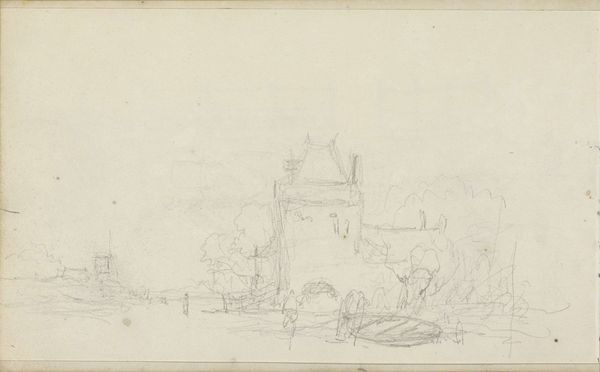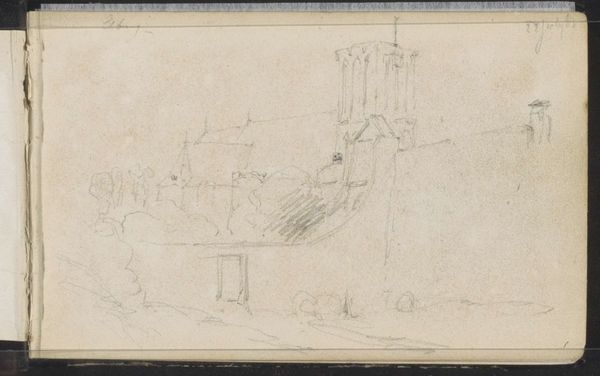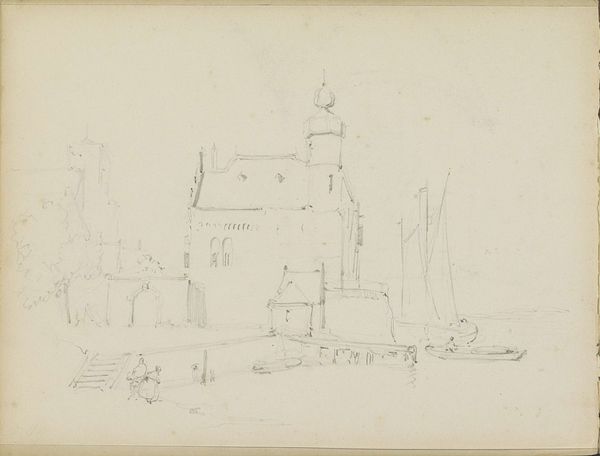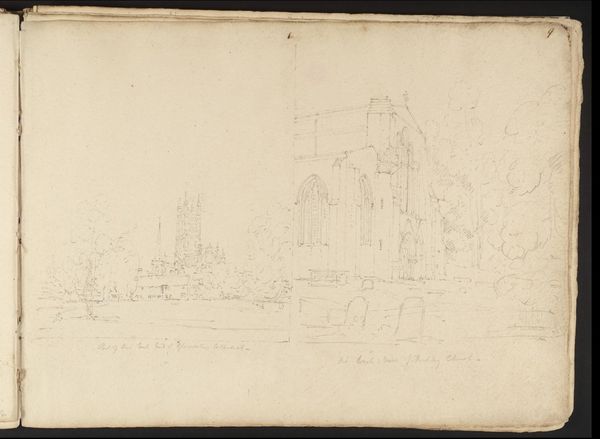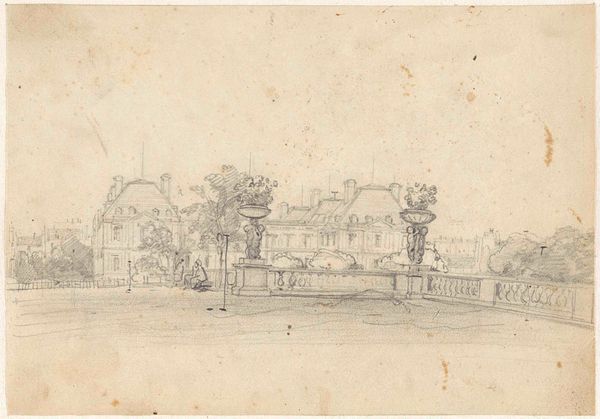
drawing, ink, pen
#
drawing
#
quirky sketch
#
baroque
#
incomplete sketchy
#
landscape
#
personal sketchbook
#
ink
#
idea generation sketch
#
sketchwork
#
pen-ink sketch
#
sketchbook drawing
#
pen
#
cityscape
#
storyboard and sketchbook work
#
sketchbook art
#
initial sketch
Dimensions: height 149 mm, width 197 mm
Copyright: Rijks Museum: Open Domain
Cornelis Pronk made this drawing of Gorinchem with graphite on paper sometime between 1691 and 1759. The quick, light strokes suggest that Pronk likely made this sketch on site, perhaps as a study for a more finished painting. We can see how the pencil lines capture the textures of the buildings and the landscape. The graphite lends itself to the light, airy feel of the scene, a contrast to the heavy materials typically associated with architecture and infrastructure. But drawings like this also played a role in larger processes of labor and production in 18th century Europe. They were often made as preparatory studies, which would then be translated into large-scale paintings and prints, sold on the art market. Ultimately, considering Pronk’s drawing on paper alongside these wider economic contexts challenges our traditional distinctions between art, craft, and commerce.
Comments
No comments
Be the first to comment and join the conversation on the ultimate creative platform.

